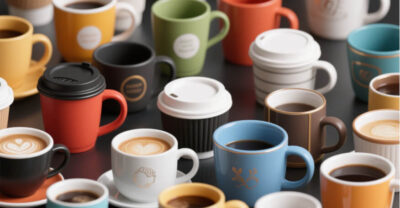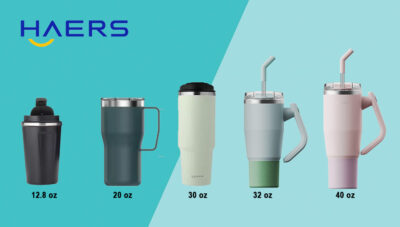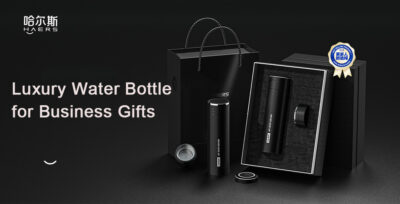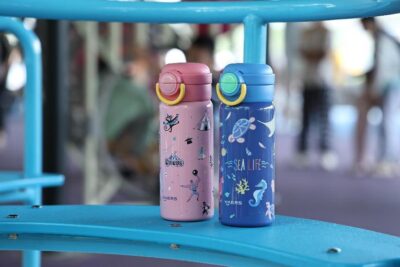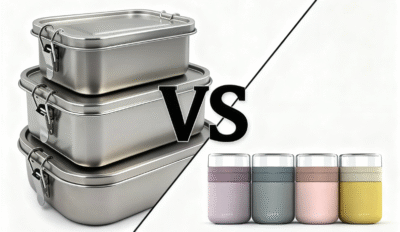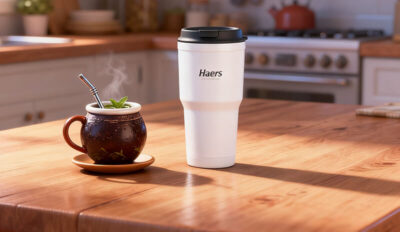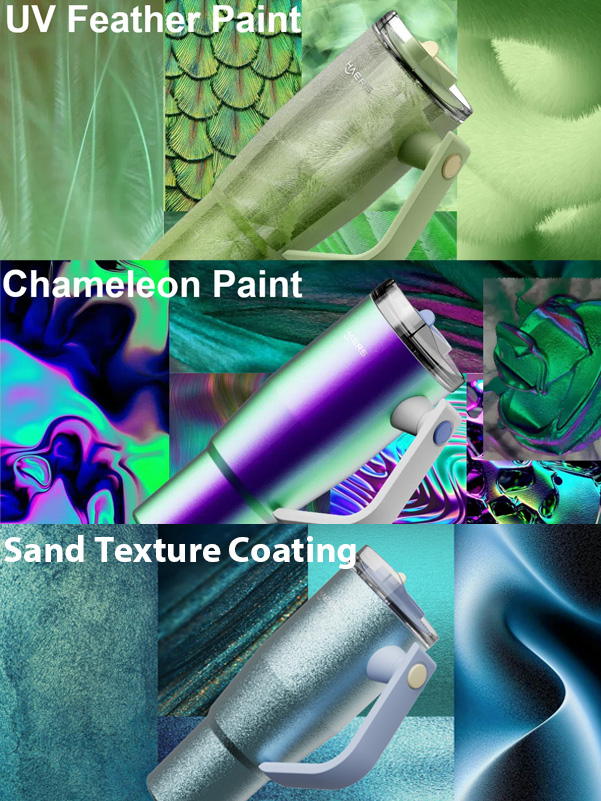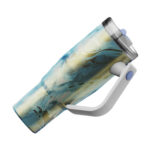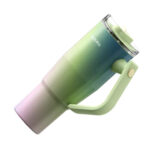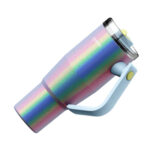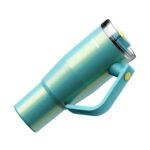Plastic vs. Metal Lids: Why Stainless Steel Bottles Choose Plastic
Stainless steel bottles have become a daily essential for many people, thanks to their ability to keep drinks hot or cold while being eco-friendly and durable. But if you’ve ever used one, you might have noticed something curious: while the body is made of sturdy stainless steel, the lid is often plastic. That leaves many wondering—if stainless steel is so great, why not use it for the lid too?
Table of Contents
ToggleWhat Materials Are Commonly Used for Bottle Lids?
The answer starts with the materials used. The plastic used in stainless steel bottle lids isn’t just any plastic—it’s carefully selected, food-grade plastic designed for safety and performance.
One of the most widely used materials is polypropylene (PP). It’s non-toxic, odorless, and highly heat-resistant, capable of withstanding temperatures over 100°C (212°F) without releasing harmful substances—even when in contact with boiling water. PP also has excellent chemical stability, meaning it won’t react with acidic or alkaline drinks, helping preserve flavor and ensuring the lid lasts longer.
What makes PP particularly popular is its versatility. It’s firm yet flexible enough to mold into complex shapes, which is ideal for creating screw-top lids, snap-fit seals, or one-touch flip mechanisms with precise functionality.
Another favorite in the industry is Tritan™, a type of copolyester plastic known for its crystal-clear appearance and premium feel. Tritan is incredibly impact-resistant, so even if you drop your bottle, the lid is unlikely to crack or break. It’s also highly resistant to hydrolysis, meaning it won’t warp or develop odors from prolonged exposure to water—perfect for daily use. On top of that, it handles chemical exposure well, making it ideal for use with drinks like coffee or juice that can be more acidic. Tritan helps maintain both the integrity of the lid and the taste of your drink.
Why Are Plastic Lids Preferred Over Stainless Steel?
At first glance, a stainless steel lid might sound like the natural match for a stainless steel insulated bottle. But in reality, plastic lids are used for very practical—and smart—reasons. From cost efficiency to heat insulation and user comfort, plastic simply performs better for this part of the bottle. Here’s why:
1. Cost Efficiency
Manufacturing cost is always a key consideration. Compared to SUS304 stainless steel, plastic is significantly cheaper. As a petroleum-based material with mature production processes and abundant supply, plastic keeps material costs low. More importantly, plastic lids can be mass-produced efficiently using injection molding—a highly automated, fast, and low-waste process. Mold costs are manageable, and when spread over large production volumes, the per-unit cost becomes very economical.
On the other hand, producing stainless steel lids is a whole different story. The process involves multiple steps—stamping, welding, polishing—all of which are labor-intensive and equipment-heavy. Not only is the raw material more expensive, but the complexity of manufacturing drives up labor and production costs. Choosing plastic for the lid helps keep the overall bottle cost competitive, making insulated bottles more accessible to a broader range of consumers.
2. Thermal Performance
Let’s not forget what insulated bottles are made for: temperature control. Lids play a critical role in maintaining that. Plastic is a poor conductor of heat, which is exactly what you want. A plastic lid helps reduce heat transfer, allowing the bottle to retain heat or cold more effectively.
In contrast, stainless steel is a great heat conductor—which is great for cookware, but not for lid design. A metal lid can become a heat escape route, weakening the bottle’s thermal insulation. That’s why stainless steel bottles rely on vacuum-insulated double walls in the body, but when it comes to the lid, plastic helps seal in the temperature more efficiently.
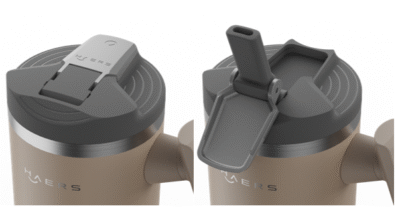
Plastic’s moldability also allows for intricate sealing mechanisms. Silicone gaskets, locking grooves, and leak-proof designs are far easier to implement with plastic, ensuring your drink stays safely inside—even when tossed in a bag or carried on the go. Stainless steel, being more rigid and harder to shape, isn’t nearly as cooperative when it comes to creating detailed, airtight closures.
3. Better User Experience
Plastic lids are lightweight, which makes a real difference in everyday use. A full stainless steel bottle can already be heavy; the last thing users want is extra weight on the lid. A lighter lid helps keep the bottle portable and convenient for commuters, travelers, students, and anyone on the move.
Then there’s the feel. Stainless steel can get uncomfortably cold in winter or too hot to touch in summer. Plastic, on the other hand, remains more neutral and pleasant to handle in varying temperatures. Plus, plastic can be textured or coated to improve grip, making it safer and more comfortable to use in any environment.
Another major plus? Functionality. Plastic allows for more flexible and creative design solutions. One-touch open mechanisms, flip lids, straw lids, even car-friendly designs—all are possible thanks to plastic’s ease of shaping. These user-friendly features are hard to replicate with stainless steel and are part of what makes modern insulated bottles so convenient and versatile.
4. Efficient Manufacturing
Plastic lid production is fast, scalable, and well-optimized. The injection molding process allows manufacturers to produce lids quickly and with high precision. The cycle is highly automated, reducing labor needs and increasing output—perfect for meeting high-volume demand in the drinkware market.
What’s more, plastic molds can be easily tweaked or customized, allowing manufacturers to adapt to different shapes, sizes, and design features without slowing down production. That kind of flexibility is crucial for brands that offer diverse product lines or custom solutions.
When Are Stainless Steel Lids Used?
While plastic lids dominate most insulated bottle designs for good reasons, there are specific scenarios where stainless steel lids shine. These aren’t your everyday office tumblers—in rugged or specialized settings, stainless steel lids offer advantages that plastic simply can’t match. Here’s where and why they’re used:
1. Outdoor & Heavy-Duty Bottles
In outdoor adventures or field work, stainless steel water bottles with large capacities—often 1 to 2 liters or more—are the go-to gear. These bottles are built for endurance, and their stainless steel lids match that spirit. Resistant to scratches, dents, and extreme environments, metal lids hold up under the demands of hiking, mountaineering, and wilderness survival.
Many of these lids are designed not just to seal the bottle, but to function as a drinking cup themselves—perfect for sharing hot drinks or sipping tea around the campfire. Inside, a silicone stopper with a push-button release ensures the bottle remains leak-proof even when carried upside down, while also allowing for one-handed pouring—ideal for situations where users need to stay on the move.
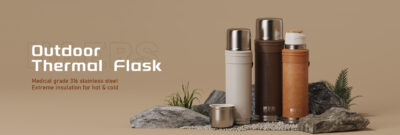
The rugged all-metal aesthetic also appeals to outdoor enthusiasts who value durability and utility over sleek, modern design.
2. Traditional Household Bottles
In some parts of the world, especially in households or schools, traditional stainless steel thermal flasks with screw-on metal lids are still common. These lids double as cups, making them practical and nostalgic.
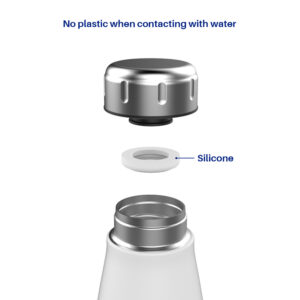
For schoolchildren, for example, it’s convenient to unscrew the lid and use it to drink hot water—no need to carry a separate cup or worry about extra cleanup. Stainless steel is naturally high-temperature resistant and corrosion-proof, making it safe for use with hot tea or herbal drinks. Plus, the classic design carries a comforting familiarity that many consumers still appreciate.
3. Industrial Work Environments
In demanding work settings like construction sites, mining operations, or factory floors, stainless steel lids are valued for their toughness and resistance. Workers need gear that can take a beating—getting dropped, kicked, or knocked around—and metal lids can endure where plastic might crack.
These lids are also less prone to absorbing oil, grease, or chemical residues, and can be thoroughly sanitized when needed. Many industrial settings use high-temperature steam for disinfection, which stainless steel can easily withstand. In these cases, hygiene and rugged performance go hand in hand.
4. Medical & Healthcare Use
Stainless steel lids also find their place in medical facilities like hospitals, clinics, and nursing homes. For patients who consume traditional herbal medicines or temperature-sensitive liquids, stainless steel is a safe and reliable material that won’t react with active compounds.
Beyond chemical stability, these lids can be sterilized at high temperatures, aligning with the strict hygiene protocols in healthcare environments. For patients with limited mobility, a secure, tight-fitting stainless steel lid prevents spills and messes, reducing cleanup and easing the workload on caregivers.
Whether it’s the high-strength durability of stainless steel lids in extreme conditions or the lightweight versatility of plastic in everyday life, each lid type has its place. At Haers, we understand that one size doesn’t fit all. That’s why we offer a wide range of customizable lid solutions—from essential, cost-effective options to premium, design-forward alternatives.
Whether you’re looking for user-friendly features, rugged performance, or personalized lid design, we’ve got you covered. Let us help you create the right insulated bottle—top to bottom—for your brand or market.


